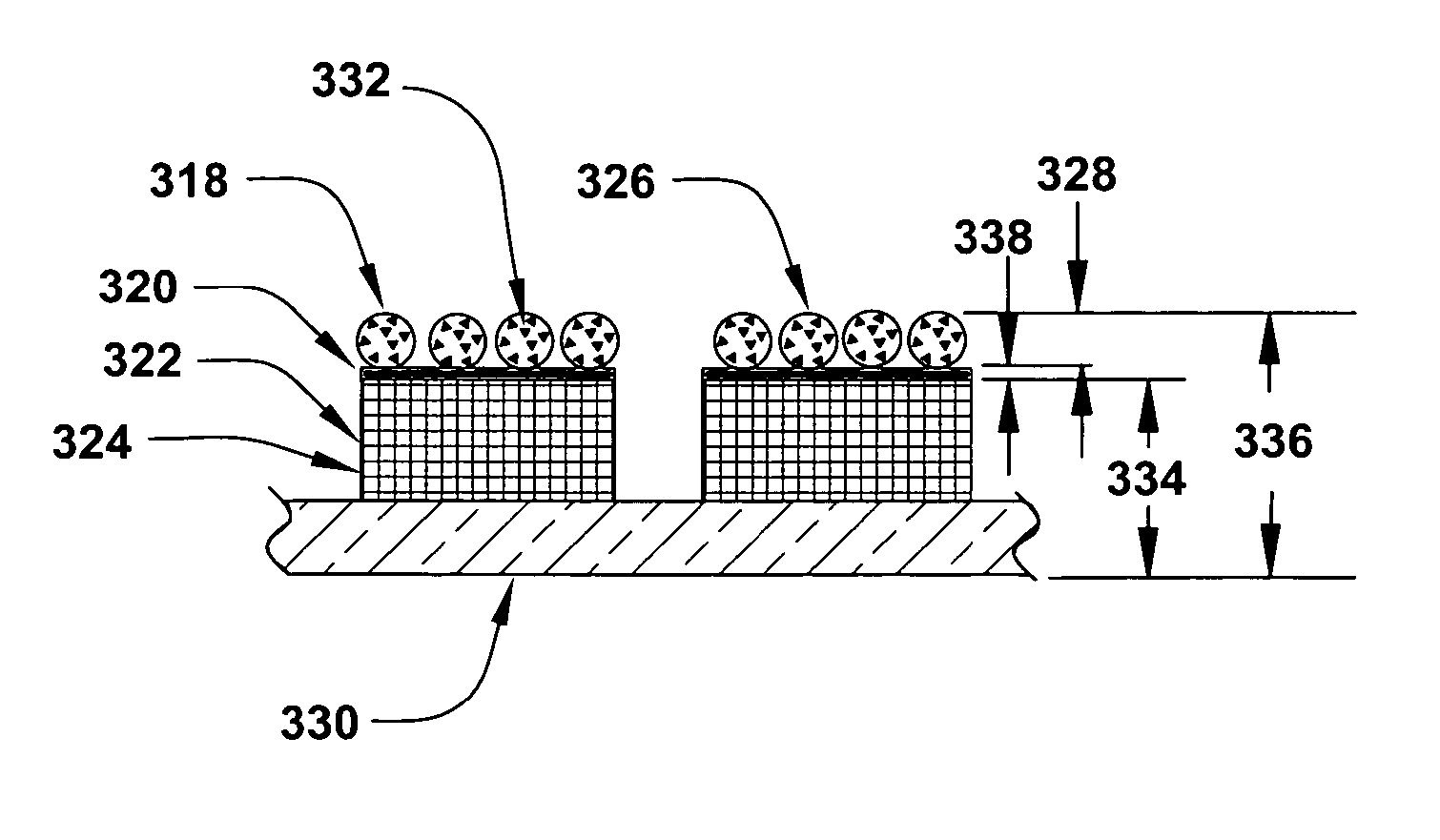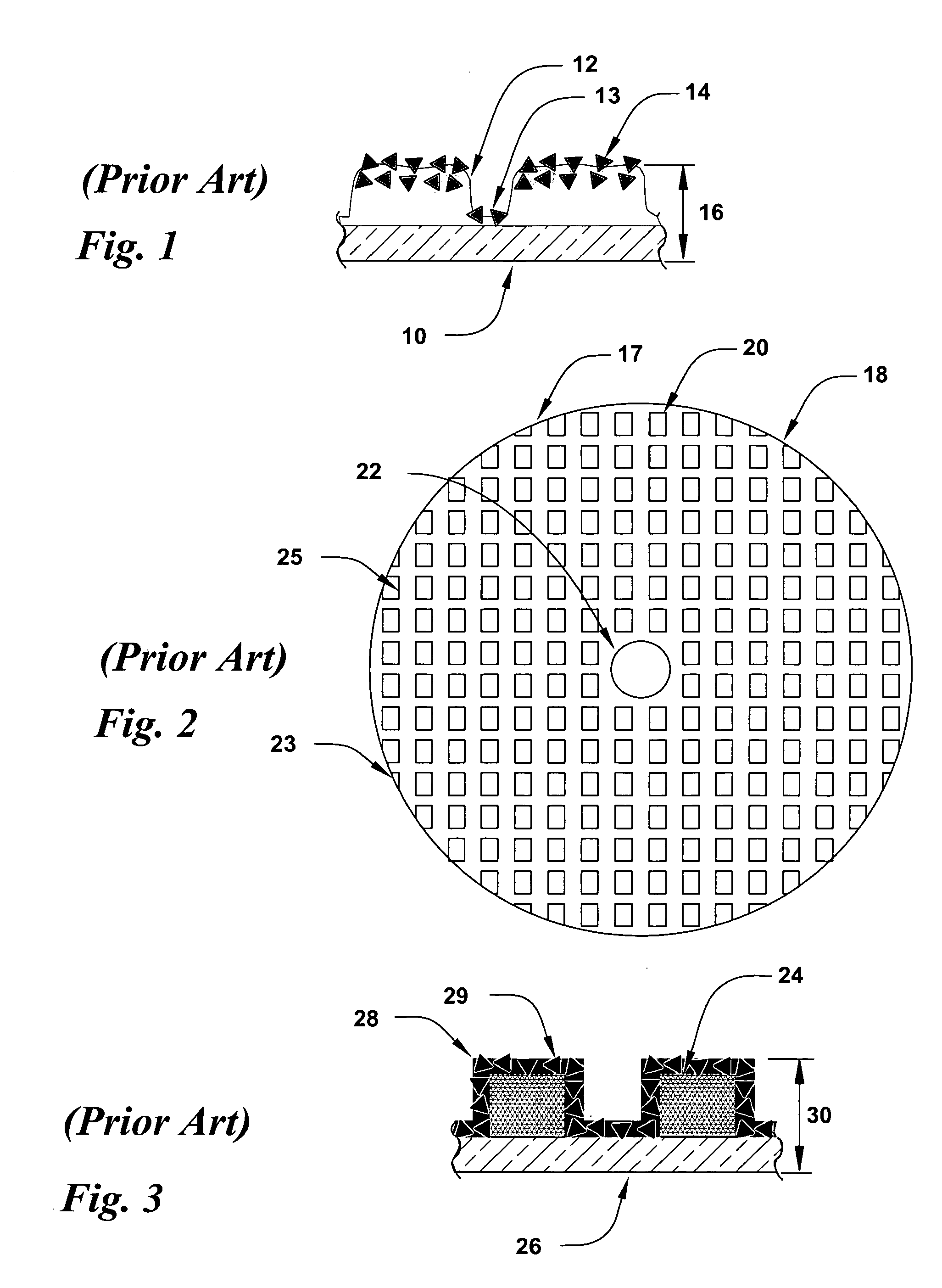Abrasive bead coated sheet and island articles
a technology of abrasive bead and coating sheet, which is applied in the direction of grinding device, manufacturing tools, other chemical processes, etc., can solve the problems of large agglomerates that can wear unevenly across the surface of abrasive articles, increased abrasive wear at the outer diameter of an abrasive disk article, and uneven wear of large agglomerates
- Summary
- Abstract
- Description
- Claims
- Application Information
AI Technical Summary
Benefits of technology
Problems solved by technology
Method used
Image
Examples
Embodiment Construction
[0214] The present invention may be further understood by consideration of the figures and the following description thereof.
[0215] In this application:
[0216]“abrasive particle” means, without limitation, an individual particle of abrasive material, the abrasive material including diamond, cubic boron nitride (CBN), aluminum oxide and other abrasives.
[0217]“abrasive agglomerate” means, without limitation, abrasive agglomerates comprised of abrasive particles in a matrix of supporting material where the agglomerate can have shapes that include spherical, near-spherical, irregular shaped lumps and other shapes.
[0218]“abrasive bead” means, without limitation, spherical abrasive agglomerates comprised of abrasive particles in a matrix of supporting material where the supporting material includes porous metal oxides or polymeric resins.
[0219]“bead” means, without limitation, a material or a number of different materials that are formed into a spherical shape where the bead is solid,...
PUM
| Property | Measurement | Unit |
|---|---|---|
| bead diameter | aaaaa | aaaaa |
| bead diameter | aaaaa | aaaaa |
| thickness | aaaaa | aaaaa |
Abstract
Description
Claims
Application Information
 Login to View More
Login to View More - R&D
- Intellectual Property
- Life Sciences
- Materials
- Tech Scout
- Unparalleled Data Quality
- Higher Quality Content
- 60% Fewer Hallucinations
Browse by: Latest US Patents, China's latest patents, Technical Efficacy Thesaurus, Application Domain, Technology Topic, Popular Technical Reports.
© 2025 PatSnap. All rights reserved.Legal|Privacy policy|Modern Slavery Act Transparency Statement|Sitemap|About US| Contact US: help@patsnap.com



